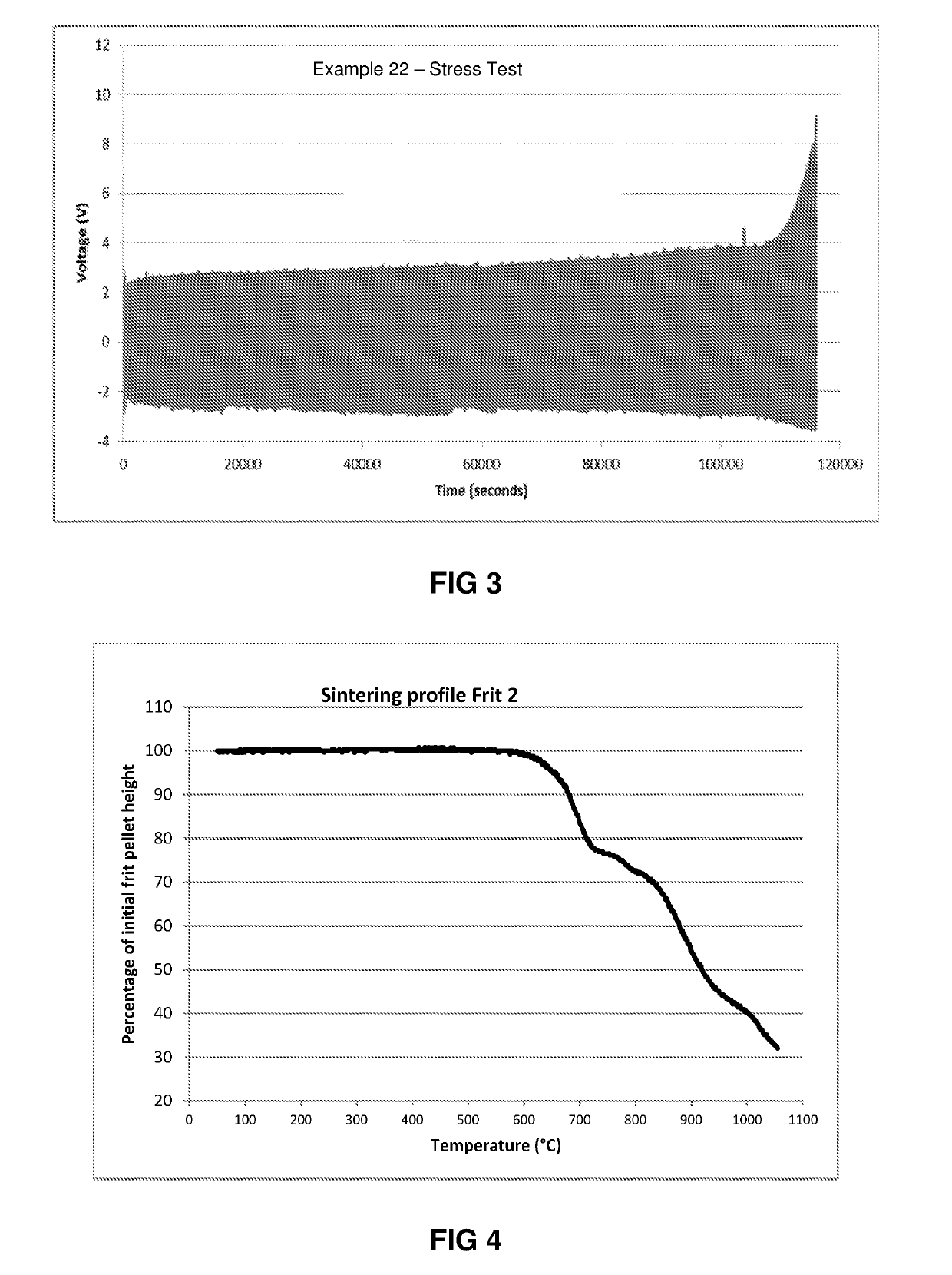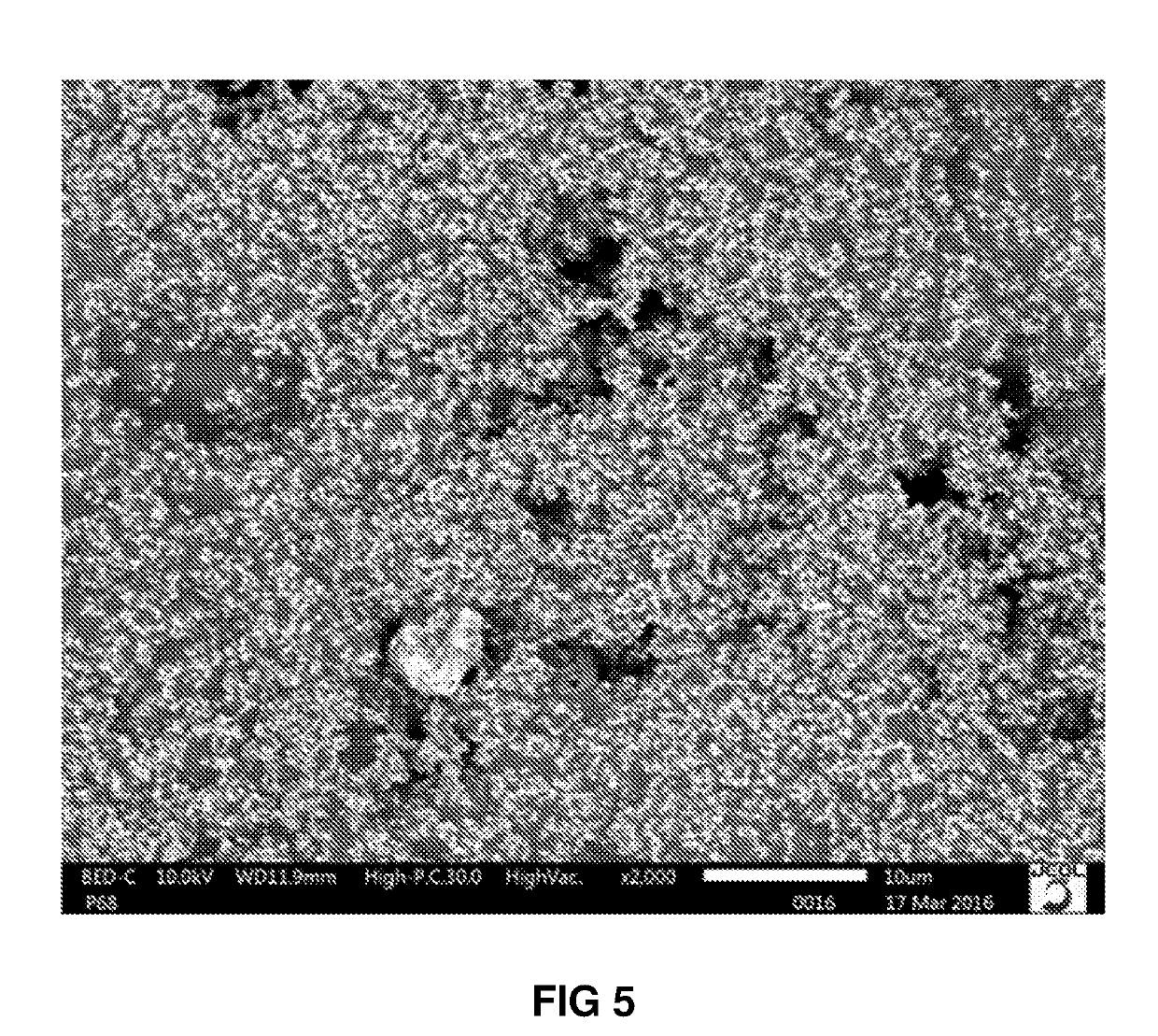Electrode
a technology of electrochemical cells and electrodes, applied in the direction of electrolysis components, specific water treatment objectives, chemistry apparatus and processes, etc., can solve the problems of time-consuming dsas formation, inconvenient process for making dsas, and limited dsas to catalytic materials, etc., to achieve simple and fast technique
- Summary
- Abstract
- Description
- Claims
- Application Information
AI Technical Summary
Benefits of technology
Problems solved by technology
Method used
Image
Examples
examples
Frit 1
Electrode Formulation Paste
[0064]Frit 1 is a borosilicate glass with a composition shown in Table 1 below:
TABLE 1Theoretical Composition (mol %) of Frit 1Metal oxideMol %SiO253.82Li2O6.74B2O313.67TiO24.63Na2O10.92ZnO5.38F1.9ZrO21.25CaO1.05V2O50.46Ce2O30.17
[0065]The theoretical composition of the glass is the composition (on an oxide basis) calculated based on the starting materials used to prepare the glass.
[0066]The glass has a CTE which is closely matched to that of the titanium metal used as the substrate (82-87×10−7 / ° C.) as this helps to prevent thermally induced stresses during heating and cooling during the firing process that could lead to cracking of the electrode material layer.
[0067]The electrode formulation paste was prepared by mixing RuO2 with Frit 1 and suspending the mixture in organic medium. The medium used was 733-63 medium, which can be obtained from Zimmer & Schwarz, Germany. The mixture was then mixed using zirconia milling beads in a Synergy Devices Ltd....
PUM
 Login to View More
Login to View More Abstract
Description
Claims
Application Information
 Login to View More
Login to View More - R&D
- Intellectual Property
- Life Sciences
- Materials
- Tech Scout
- Unparalleled Data Quality
- Higher Quality Content
- 60% Fewer Hallucinations
Browse by: Latest US Patents, China's latest patents, Technical Efficacy Thesaurus, Application Domain, Technology Topic, Popular Technical Reports.
© 2025 PatSnap. All rights reserved.Legal|Privacy policy|Modern Slavery Act Transparency Statement|Sitemap|About US| Contact US: help@patsnap.com



